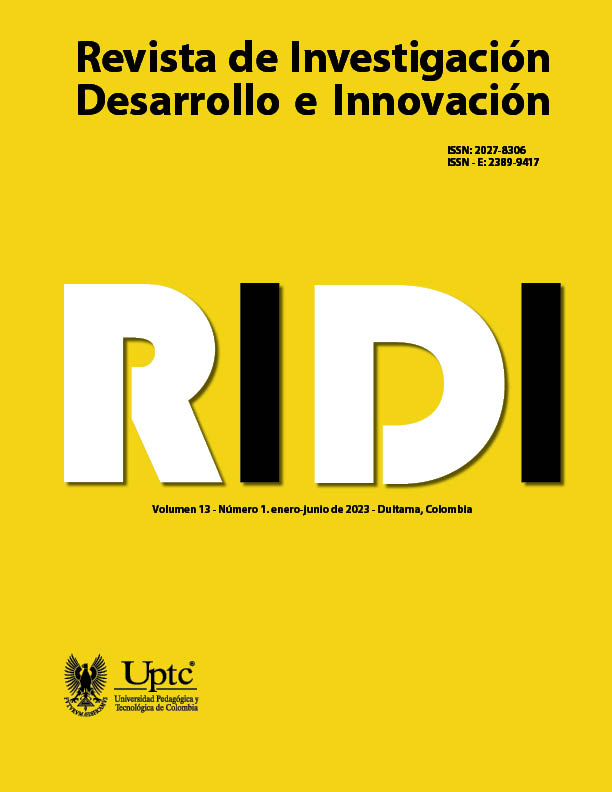Data analysis of thefts in the city of Medellin from a descriptive approach

Abstract
This article aims to identify trends and patterns of theft in the city of Medellin in the period 2014-2020, using open government data. The methodology used is business intelligence for descriptive data analysis. Variables such as neighborhoods, modalities, type of theft, and the prediction of the theft modality variable are analyzed. The results show that historically the second half of the year has the highest trend of incidences, where most thefts occur in public places 60% without the use of weapons. It is shown that due to the COVID pandemic, historical trends showed significant changes, but once the restrictions were lifted, they resumed the trends of increases in thefts in pre-pandemic conditions. It is concluded that the use of open data analisys gives information to improve the decision-making of the citizens
Keywords
open data;, theft;, machine learning;, business intelligence
Author Biography
Gina Maestre-Gongora
Ingeniera de Sistemas, Doctora en Ingeniería de Sistemas y Computación
Camilo Andrés Acuña-Castellanos
Ingeniero de Software
Edwar Londoño-Bedoya
Ingeniero de Software
Sergio García-García
Ingeniero de Software
References
- Acuña, C., Garcia, S., Londoño, E., & Maestre-Gongora, G. (2020). Inteligencia de negocios para analizar hurtos en la ciudad de Medellín: un enfoque desde datos abiertos. Congreso Internacional de La Sociedad de Doctores e Investigadores de Colombia, 3.
- Díaz, J. (2012). Introducción al business intelligence. Editorial UOC.
- López, N., & Mahecha, J. (2017). Prototipo de software para la evaluación de la calidad de datos abiertos. Universidad Católica de Colombia.
- Maestre-Gongora, G., & Nieto-Bernal, W. (2019). Conceptual model of information technology management for smart cities: Smarticity. Journal of Global Information Management, 27 (2). https://doi.org/10.4018/JGIM.2019040109 DOI: https://doi.org/10.4018/JGIM.2019040109
- Maestre-Gongora, G., Rangel-Carrillo, A., & Osorio-Sanabria, M. (2021). The value of open data government: a quality assessment approach. Revista de Investigación, Desarrollo e Innovación, 11 (3), 507–518. https://doi.org/https://doi.org/10.19053/20278306.v11.n3.2021.13348 DOI: https://doi.org/10.19053/20278306.v11.n3.2021.13348
- McClendon, L., & Meghanathan, N. (2015). Using Machine Learning Algorithms to Analyze Crime Data. Machine Learning and Applications: An International Journal, 2 (1), 1–12. https://doi.org/10.5121/mlaij.2015.2101 DOI: https://doi.org/10.5121/mlaij.2015.2101
- Nguyen, T. T., Hatua, A., & Sung, A. H. (2017). Building a Learning Machine Classifier with Inadequate Data for Crime Prediction. Journal of Advances in Information Technology, 141–147. https://doi.org/10.12720/jait.8.2.141-147 DOI: https://doi.org/10.12720/jait.8.2.141-147
- Pérez-Rave, J., Correa-Morales, J. C., & González-Echavarría, F. (2019). Metodología para explorar datos abiertos de accidentalidad vial usando Ciencia de Datos: Caso Medellín. Ingeniare, Revista Chilena de Ingeniería, 27 (3), 495–509. https://doi.org/10.4067/s0718-33052019000300495 DOI: https://doi.org/10.4067/S0718-33052019000300495
- Pumares-Romero, A. G. (2019). Minería de datos en el análisis de causas de accidentes de tránsito en el Ecuador. Universidad Israel. http://repositorio.uisrael.edu.ec/handle/47000/2299
- Rosado, A. A., & Rico, D. W. (2010). Inteligencia de negocios: Estado del arte. Scientia et Technica, 1 (44), 321–326. https://doi.org/https://doi.org/10.22517/23447214.1803
- Telugu-Maddileti, V., Sai, M., Sai-Sashank, K. V., & Shriphad-Rao, G. (2020). Crime Data Analysis Using Machine Learning Models. International Journal of Advanced Science and Technology, 29 (9), 3260–3268. http://sersc.org/journals/index.php/IJAST/article/view/15887
- Treviño, R., Rivera, F., & Garza, J. (2020). La analítica de datos como ventaja competitiva en las organizaciones. VinculaTégica, 6 (2), 1063–1074. http://www.web.facpya.uanl.mx/vinculategica/Vinculategica6_2/5_Treviño_Rivera_Garza.pdf
- Wieczorkowski, J. (2019). Open data as a source of product and organizational innovations. Proceedings of the European Conference on Innovation and Entrepreneurship, ECIE, 2, 1119–1128. https://doi.org/10.34190/ECIE.19.190